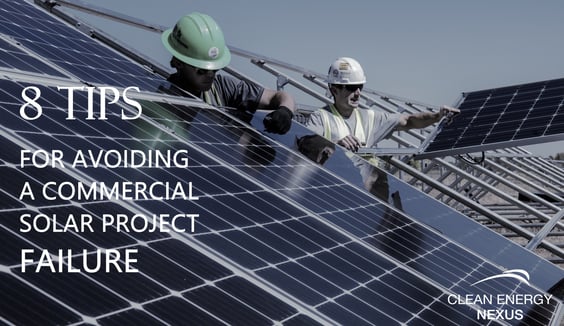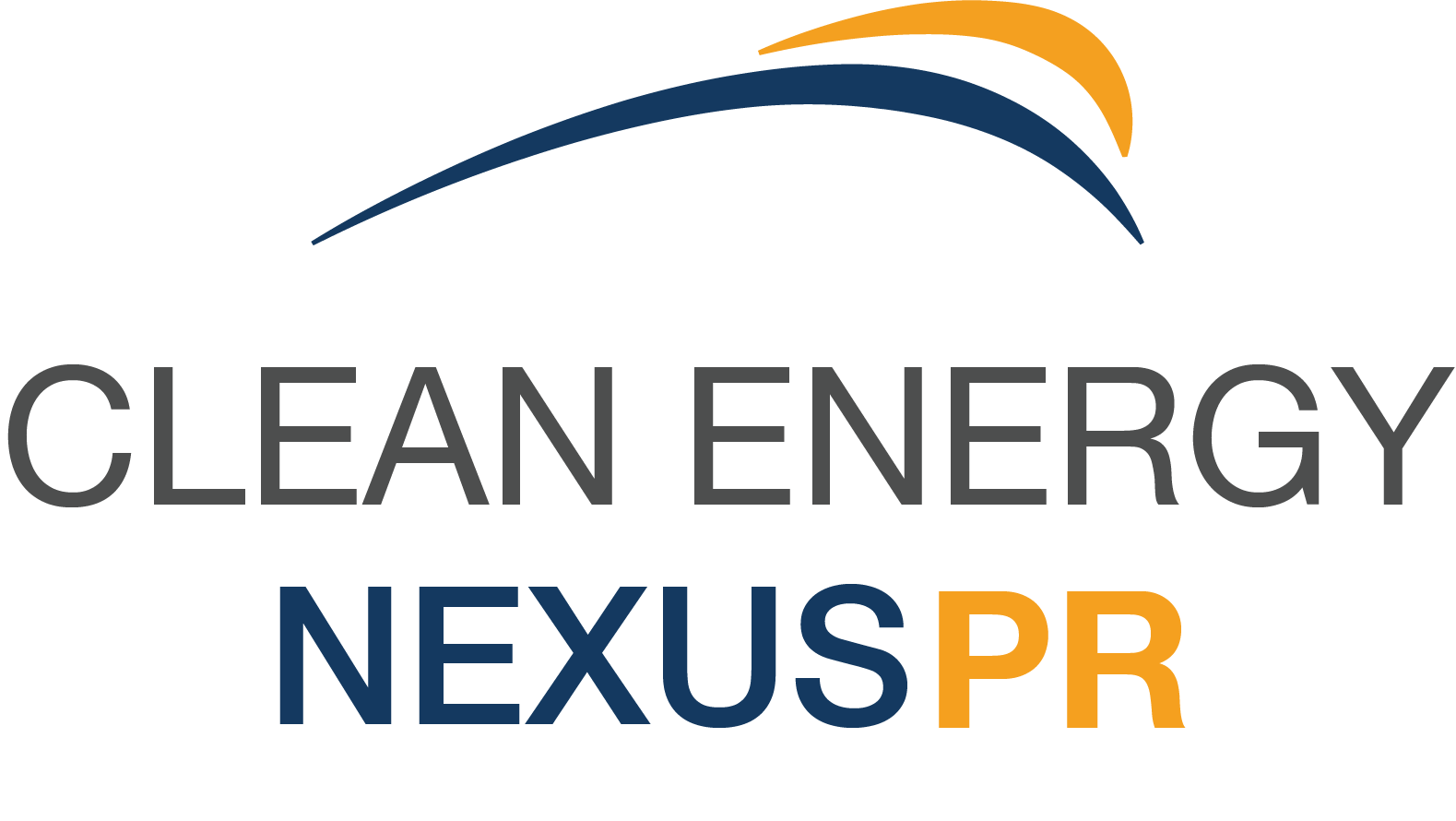
Have you ever thought about adding a solar photovoltaic (PV) system to your property or business, and want to do it yourself (DIY)? There are some great benefits to doing so, but the journey from creating a project concept to having a fully operating system is often fraught with peril.
Commercial & Industrial (C&I) solar systems often “die on the vine” or get canceled during the development period, which itself can sometimes take years depending on your system size, location, and experience with solar. If you are considering adding a solar system to your business or property, here are 8 tips for avoiding the common pitfalls of a failed solar system installation.
- Begin with a purpose.
Why are you installing the system? Having a purpose for installing a solar project at your business allows you to measure your success at the end of this hefty endeavor. A few common reasons for installing solar are to reduce the demand charges of your electricity bills if your company has high power requirements during peak times (which can vary by utility and even by time of year). Another reason to go solar, if you are a property owner, is for the system incentives like bonus depreciation and the Investment Tax Credit, or simply to remove the uncertainty around the ever-increasing utility cost of your electricity in the future. Less common but still valid reasons for installing solar are for the increased net operating income (NOI) to your property, carbon offsets/ or corporate sustainability program participation such as LEED Certifications, and sometimes you may operate in an area with low grid-reliability and you simply want to reduce power interruptions to your business.
- Ensure solar is allowed where your business operates.
The tips we provide in this article are based on the presumption that installing a commercial solar system in your area is allowed by federal, state, and local authorities, often referred to collectively as Authorities Having Jurisdiction (AHJ), and your electric utility. Generally, rural areas are less difficult to get approved for solar, and more densely populated areas are more difficult to get approved. If you are not sure if solar is allowed in your area, you can hire a solar management company to perform that legal due diligence on your behalf.
- Determine where you want your system installed.
Conventional options are land-based (ground-mounted), roof-based (roof-mounted, or ballasted), or a combination of the two. If you are interested in a roof-based system, you will need to have your roof professionally assessed for structural integrity. If you have the space available in your parking lot, your business patrons may be attracted to and benefit from solar carports, which can provide helpful shading in the summer.
As part of the location equation, you also want to consider what solar technology type you will use. There are an array of companies that manufacture modules, inverters, and racking solutions, but not all are created equally, and sometimes certain equipment will not work in certain geographic areas. For example, in areas where hurricanes are frequent, we would not advise a dual-axis tracking technology be a part of that solar system. For the time being, until the technology advances, we also advise our clients to avoid certain technology options altogether, such as flexible solar wraps for your building, or solar glass for your windows, or solar thermal systems which are all much less efficient than a typical Photovoltaic (PV) system.
- Know your power consumption, or the load profile of your business.
Also consider the future growth of your business and factor that into your energy usage needs. For example, it is okay to install an ‘oversized’ system based on your current consumption, if you know you will be adding more energy intensive machinery to your factory floor next quarter which will increase your consumption by 25%. Also consider obtaining an Avoided Energy Cost (AEC) analysis which shows exactly how much you would be saving after installing a solar system versus what you would have paid if you did not install solar.
- Determine the system size to install based on your load profile.
A professional engineer uses specialized tools and technology to create a right-sized energy generating system. If the system is too small your savings will not be realized, and if it is too large you may lose money. Electric utilities will sometimes pay their solar customers for any power their solar system produces that does not get used on-site by the solar system owner. That excess power gets sent to the utility, and depending on the utility, they may either credit your bill on a scheduled basis, or in some cases, the utility will send you a check directly for the value of the power you sent them. However, if your utility does not reimburse you for overproducing power, you are losing money in the form of lost savings.
- Calculate the system cost.
A little-known fact is that system costs vary widely based on the quality of the equipment, the quantity of equipment bought, who performs the install of your system, where the install is taking place, etc. Luckily, there are several options available for paying for a solar energy system. Utilize 100% equity and pay cash out of pocket, finance the system with a solar-friendly bank or solar financing company, or sign a Power Purchase Agreement (PPA) which can enable a 3rd party company to pay for the solar system and sell you the power produced by the solar system at an agreed-upon, scheduled, fixed rate and term.
- Hire a solar system installation company.
Unless you are a certified solar installer, seek out the service of professional solar companies to install your solar energy system. Solar systems as a whole are not warrantied unless they're installed by professionals, and that alone is worth the cost of paying for a professional install. Hiring a company as your EPCM (Engineering, Procurement, and Construction Manager) will ensure the project is completed on time, and with a professional quality that will ensure your system lasts for 25 years or more.
Expect weekly construction reports from your EPCM. Weekly reports should include what work was completed the previous week, what work will be completed the current week, and any outstanding issues, requests for information (RFI), or change orders to the scope of work. Closely track your construction budgets and invoices because as change orders occur, bottom line costs can be severely impacted.
- Determine what parts of the project and ongoing management you'll DIY.
A single company will often offer to install the system and also manage all the other project vendors for you. You may also choose to reach out to and manage the various disparate vendor companies yourself. Vendors are needed to procure the right equipment, to carry out the logistics, to obtain necessary permitting certifications and approvals, and then to install the system and do performance testing prior to commissioning. If you choose to manage the vendors yourself, remember to obtain copies of each vendor’s bonding status (where applicable), insurance coverages, W-9s, and various lien waivers. Research vendors by reading their online reviews, asking for references, and then asking for quotes.
It is a lot of work to coordinate and manage the paperwork side of a solar project, however, having a well-documented project will help you keep track of everything and everyone and will give you the greatest chance of executing a successful project.
A commercial solar system can be advantageous to your property and business, however, to execute such a project successfully, you will need a well-thought-out and designed plan. Clean Energy Nexus is a solar integrator and EPCM, and we'd love the opportunity to discuss your solar project plans with you and offer our help.
If you are interested in talking more about how your company might benefit from installing a solar system and how we might help, please reach out to us here.
